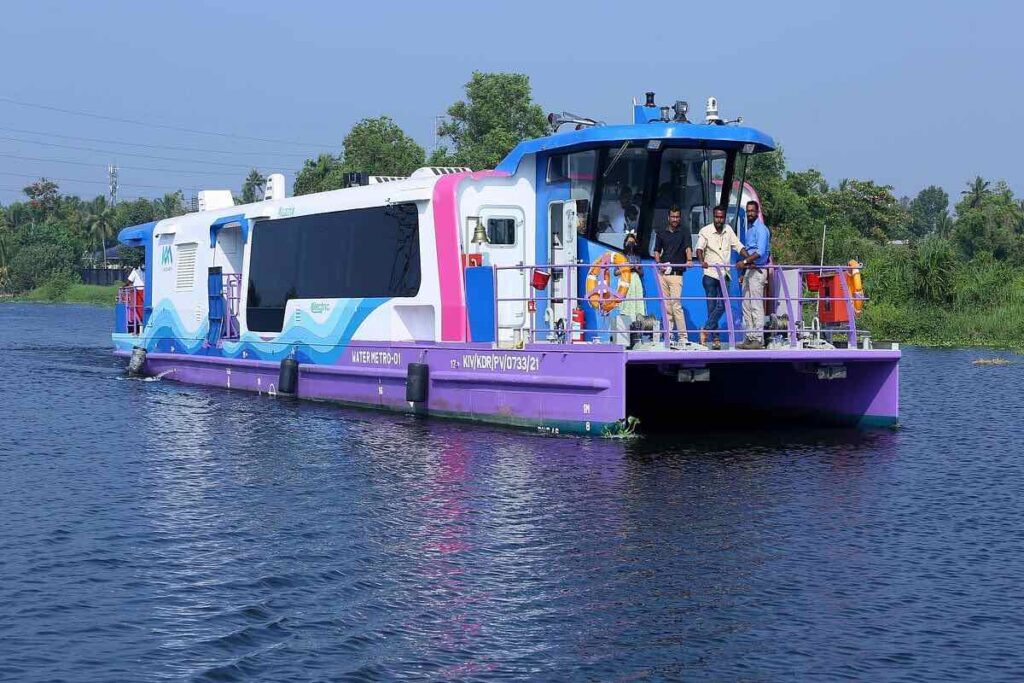Apart from being an eco-friendly mode of transportation, the Kochi Water Metro will help reduce road traffic congestion, benefiting the commercial city with faster commuter travel.
Kochi, the southwest city of Kerala, is now home to Asia’s largest integrated water transport system – the Kochi Water Metro. Launched on April 25, 2023, by Prime Minister Narendra Modi, the water metro is set to revolutionize Kochi’s transportation system. In just a week of its launch, daily ridership has crossed the 10,000 mark, making it a unique water mark.
RELEVANT SUSTAINABLE GOALS


Kochi Water Metro
The water metro is an integrated ferry transport system that connects 10 island communities of Kochi with the mainland. The project was implemented by the Kochi Metro Rail Corporation (KMRL) in collaboration with the German funding agency, Kreditanstalt fur Wiederaufbau. It is the first water metro system in India and boasts a fleet of 78 battery-operated electric hybrid boats, each with a seating capacity of 50 and a maximum capacity of up to 100 passengers.
The water metro covers 38 terminals and 16 routes spanning 76 kilometers, with two types of boats equipped with all modern facilities, including air-conditioned service. Currently, eight boats are operational during peak hours, and the frequency of the boats is every 15 minutes.
The water metro’s first phase comprises two routes: High Court to Vypin terminal and Vyttila to Kakkanad route, with four terminals – High Court, Vyttila, Vypin, and Kakkanad. The water metro is also pocket-friendly, with a fare of Rs. 20 from High Court to Vypin and Rs. 30 from Vyttila to Kakkanad. Passengers can use the ‘Kochi Metro One’ card and the ‘Kochi One’ app for hassle-free e-tickets.
#Kochi water Metro!
— Dr Roy Kallivayalil (@RoyKallivayalil) April 29, 2023
Futuristic, indeed!
Kerala pic.twitter.com/O77B9nJd2x
Apart from being an eco-friendly mode of transportation, the Kochi Water Metro will help reduce road traffic congestion, benefiting the commercial city with faster commuter travel. The water metro is also expected to improve livelihoods through commercial property development and tourism-based initiatives, making it a socially inclusive transport system.


